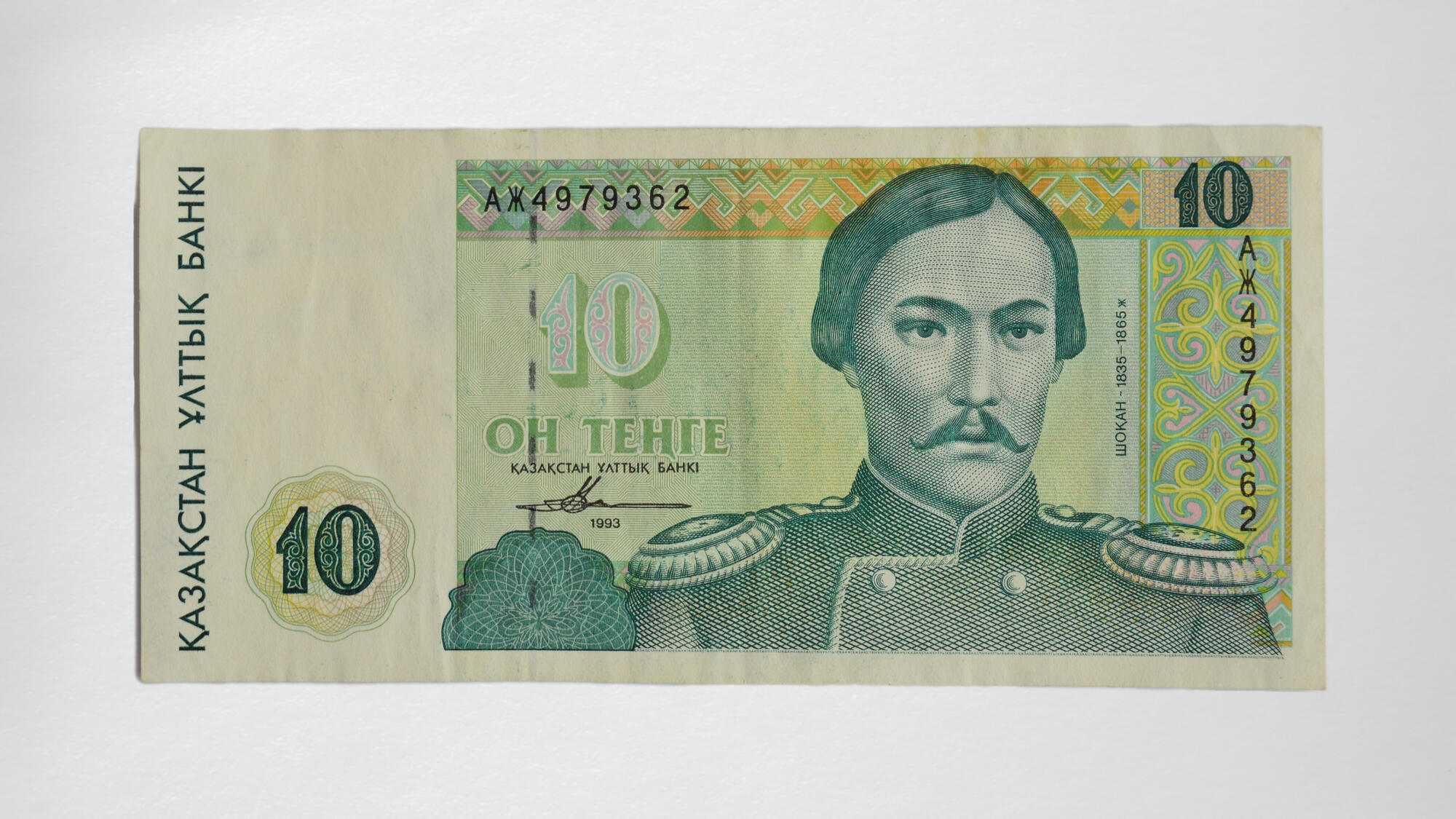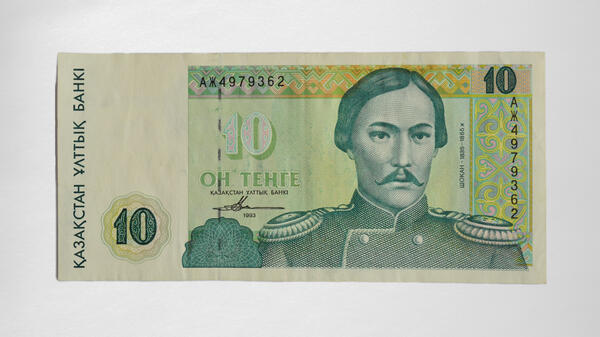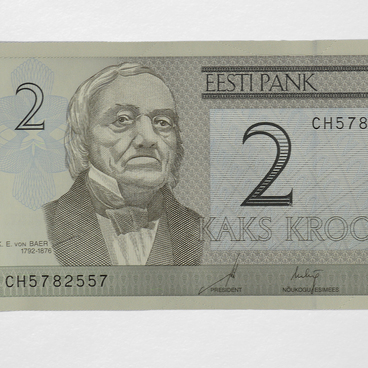The museum’s collection includes a 10 tenge banknote, the national currency of Kazakhstan, which was put into circulation in 1993. On the obverse there is a portrait of the traveler and scholar Shoqan Walikhanov (1835-1865). He was the first Kazakh historian, ethnographer, folklorist, orientalist, and educator.
Shoqan Walikhanov was born in 1835. At the age of 12 he enrolled in the Siberian Cadet Corps in the city of Omsk, where his main academic interests were developed. In Siberia, the young man communicated with such famous poets and writers as Fyodor Dostoevsky, Apollon Maykov, and Vasily Kurochkin. After graduation, Walikhanov served as adjutant to the governor-general of the General Government of the Steppe Region, continuing to study deeply literature, history, ethnography, and culture of the peoples of Central Asia.
In 1856-1857, Shoqan Walikhanov undertook a major research expedition to get to know the Kyrgyz people and see Issyk-Kul, the largest lake in Kyrgyzstan. During this trip, he wrote works that made him famous — ‘Essays on Dzungaria’, ‘Notes on the Kyrgyz’, ‘On the Genres of Kazakh Folk Poetry’, ‘Diary of a Trip to Issyk-Kul’, ‘Legends and Tales of the Great Kirghiz-Kaisat Horde’ and other works.
These and other texts by Walikhanov became the basis for modern understanding of Kazakh culture and literature. They were highly valued by many scientists and still have not lost their relevance. Besides, during the trip, the scientist recorded and for the first time translated into Russian fragments of the Kyrgyz epos ‘Manas, ’ which is considered an outstanding piece of folklore that is passed by word of mouth.
It is known that Pyotr Semyonov-Tyan-Shansky was acquainted with Shoqan Walikhanov. They met in Semirechye in Central Asia and discussed possible routes through that region. Also, on the recommendation of the traveler in 1857, Walikhanov became a full member of the Russian Geographical Society. Semyonov-Tyan-Shansky supported and promoted the geographical and historical research of the scientist. The flowering of scientific activity of Shoqan Walikhanov was in the late fifties and early sixties of the 19th century.
Shoqan Walikhanov was born in 1835. At the age of 12 he enrolled in the Siberian Cadet Corps in the city of Omsk, where his main academic interests were developed. In Siberia, the young man communicated with such famous poets and writers as Fyodor Dostoevsky, Apollon Maykov, and Vasily Kurochkin. After graduation, Walikhanov served as adjutant to the governor-general of the General Government of the Steppe Region, continuing to study deeply literature, history, ethnography, and culture of the peoples of Central Asia.
In 1856-1857, Shoqan Walikhanov undertook a major research expedition to get to know the Kyrgyz people and see Issyk-Kul, the largest lake in Kyrgyzstan. During this trip, he wrote works that made him famous — ‘Essays on Dzungaria’, ‘Notes on the Kyrgyz’, ‘On the Genres of Kazakh Folk Poetry’, ‘Diary of a Trip to Issyk-Kul’, ‘Legends and Tales of the Great Kirghiz-Kaisat Horde’ and other works.
These and other texts by Walikhanov became the basis for modern understanding of Kazakh culture and literature. They were highly valued by many scientists and still have not lost their relevance. Besides, during the trip, the scientist recorded and for the first time translated into Russian fragments of the Kyrgyz epos ‘Manas, ’ which is considered an outstanding piece of folklore that is passed by word of mouth.
It is known that Pyotr Semyonov-Tyan-Shansky was acquainted with Shoqan Walikhanov. They met in Semirechye in Central Asia and discussed possible routes through that region. Also, on the recommendation of the traveler in 1857, Walikhanov became a full member of the Russian Geographical Society. Semyonov-Tyan-Shansky supported and promoted the geographical and historical research of the scientist. The flowering of scientific activity of Shoqan Walikhanov was in the late fifties and early sixties of the 19th century.


